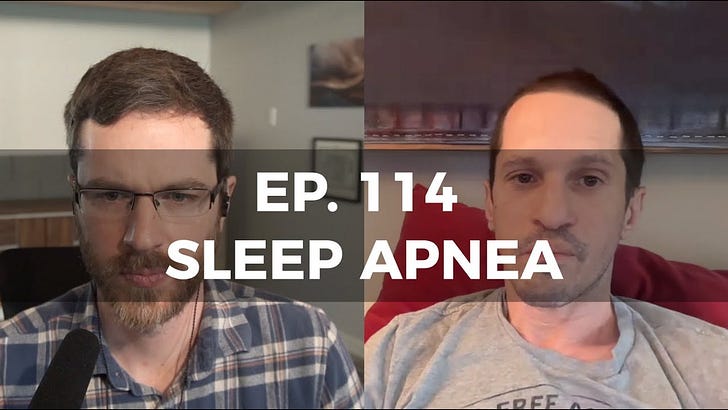A central goal of scientific investigation is to understand causal mechanisms. We want to understand why specific inputs generate specific outputs. For example, in medicine, we want to understand the mechanisms of action of drugs to be able to more skillfully use them. Unfortunately, the desire to understand mechanism has led scientists, doctors, and researchers into grave error—the “mechanism fallacy”—thinking that correlations are not causally connected if the mechanism is not understood. This is a type of logical fallacy known as the “argument from incredulity”—the rejection of an idea because one cannot imagine how it could be true.
Despite being a common fallacy among the scientific class, it is inherently anti-scientific. It causes people to dismiss observations out-of-hand without examination due to discordance with existing theoretical models—that is, anti-empirical in a technical sense. It also tends to reflect a lack of creative thinking. Generally speaking, we see connections before we understand them—sometimes these connections are observed thousands of years before we can pretend to understand them. People have been using soap and boiling water to stay healthy long before anyone could explain why.
To put it bluntly: we don’t understand causal mechanisms. Even for simple things. We tell ourselves nice-sounding theoretical stories, at a certain level of resolution, that usually turn out to be false and sloppy. Our resolution is not fine-grained enough to truly understand almost anything. If we required mechanism to be sorted out before entertaining hypotheses, we would not be able to offer any hypotheses at all.
Simple and Common Medicine
Let’s start with a concrete example: aspirin. What could be a more commonplace medicine, prescribed for ages, for all kinds of ailments? Not a fancy medication at all. We know all kinds of things about aspirin — its chemical composition, generally safe doses, generally safe contexts for ingestion—and yet it turns out in 2025, we still do not fully understand its mechanism of action (Example 1, Example 2, Example 3). We can use it, but we don’t fully understand it. There are stories we tell about mechanisms, with progress made every few decades, but nothing is finally figured out. To make the point explicit: if aspirin were a new medication, it would thus be self-evidently wrong to say, “We should not believe in its effectiveness because… what’s the mechanism?” Clearly, knowing that aspirin works is a completely separate question from understanding why it works.
It will probably take a much fuller (perhaps complete) understanding of the human body to really figure out how simple aspirin works. And alas, it will probably take a full understanding of physics to figure out how the human body works.
Balls and Needles
How about an ultra-simple example. A ball rolling down a plank. Surely we understand what causes this basic phenomenon. It’s gravity, of course!
I’m afraid it’s not just gravity. It involves a list of concepts so large, I can’t even list them all—surface tension and air resistance, thermodynamics, geometry, time, quantum physics, each one of these domains splinters into a million more complex sub-domains. And come to think of it, we don’t even have gravity itself figured out. Whose gravity—Einstein’s or Newton’s? To truly understand the ball rolling down a plank, we probably need a full understanding of quantum gravity, which does not yet exist. So unless you are willing to claim to have solved physics, it’s fair to say we don’t actually understand the true mechanisms for utterly basic phenomena. We tell nice-sounding stories that answer surface-level questions, but our stories are certainly incorrect and incomplete. Therefore, when people make claims about unusual physical phenomena, we should be extremely careful before dismissing those claims due to a lack of known mechanism.
Take another example: acupuncture. Much has been written about the effects of acupuncture and the usual woo-woo theories accompanying it. There are legions of scientific minds who dismiss the practice due to a flimsy theory of mechanism—energy flow, meridians, qi, etc. And yet, despite the mockery from scientific Westerners, the practice continues to grow in popularity all over the world.
The trouble is: there’s a ton of evidence that acupuncture works, both in the medical literature and outside it (Example 1, Example 2, Example 3,). We just don’t understand the mechanism yet, though there are several obvious leads. The nerves in our bodies, for example, match the “energy flow” diagrams with fair accuracy. It’s not hard to imagine that the tiny needles are interacting with our nervous system in ways we don’t understand. In fact, I’m sure in hindsight that will be utterly obvious.
Prayer and Needles
Two more controversial examples: prayer, and the “safe and effective” medical intervention that people have strong opinions about.
Prayer is an easy one, and it doesn’t take too much creativity to come up with a plausible mechanism. At the very least, praying obviously benefits the pray-er, in the same way that meditation benefits the meditator. If this is true, then it’s not hard to speculate how prayer might help others too, without appealing to any mystical mechanism.
When somebody says, “I am praying for you,” they are saying “I am caring for you and sympathizing with your situation.” That feels good; it is going to have a non-zero effect on your nervous system (as receiving a hug and a kiss might, too). When fifty friends are sending somebody their prayers, the pray-ee usually feels good about it. They might even describe it as “feeling the love” which is going to concretely affect their nervous system. Not to mention the widespread social benefits accrued to members of the group participating in the communal prayer act (and the effects on their neurology and group-bonding, which provide even more routes to benefit the pray-ee).
Furthermore, we know there’s a connection between brains and electricity. Brain waves are a real, measurable thing. We know meditators can affect their own brain waves—and by extension, since those waves stretch through the skull, they have a non-zero impact on the environment around them. This is why medical apparatuses can “read” brain signals—because those brain waves actually physically affect the world. It’s not difficult to imagine that prayer (especially coming from a skilled prayer/meditator or many people) might have real physical effects in the complex domain of bioelectricity.
This is just simple, easy, obvious speculation. What are the chances that the practice of prayer, discovered since time immemorial, therefore is tracking something real, even if we don’t understand it? I’m going to say it’s practically guaranteed, especially if we account for indirect mechanisms of interaction, much less any supernatural causality.
The last example is vaccination. On the one hand, we have an army of mothers around the world claiming they have observed a causal connection: shortly after receiving a shot, their kids started to develop neurological problems. On the other hand, we have an army of medical professionals insisting the science is settled, that there’s no possible causal connection, etc.
In this case, there are several plausible mechanisms for neurological damage, but even if there weren’t, the empirically-minded scientist must recognize that if the signal does not go away—if mothers around the world are still making the same claims after decades—then that’s evidence of an unknown causal connection. That’s exactly what it looks like when there’s correlation with not-yet-understood causation.
Anti-Empiricism
It should be noted the irony of the extremely anti-empirical approach of a mechanism-first understanding of nature. Empirical inquiry starts with observation. To reject the validity of observations because they do not fit pre-existing theoretical models is perhaps the definition of dogmatic, anti-empirical thinking. Unfortunately, it’s made legions of 19th and 20th century thinkers extraordinarily arrogant and has blinded them to basic observation. They are convinced their theories are so good, there’s no longer a need to open their eyes and observe the world!
As a general rule, I propose that the question “But what’s the mechanism?” should never be considered a counter-argument to any claim. It can be asked in good faith to prompt people to start thinking creatively, but it’s not criticism, especially considering our shallow understanding of the world. There’s a high likelihood all our favorite scientific ideas will be invalidated in the next few centuries, so let’s think with a little more humility.






